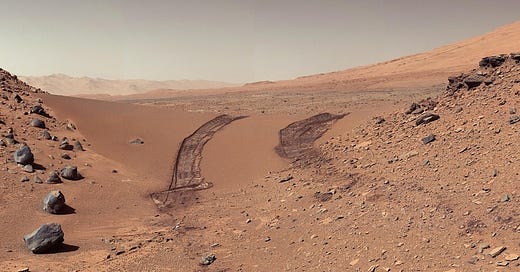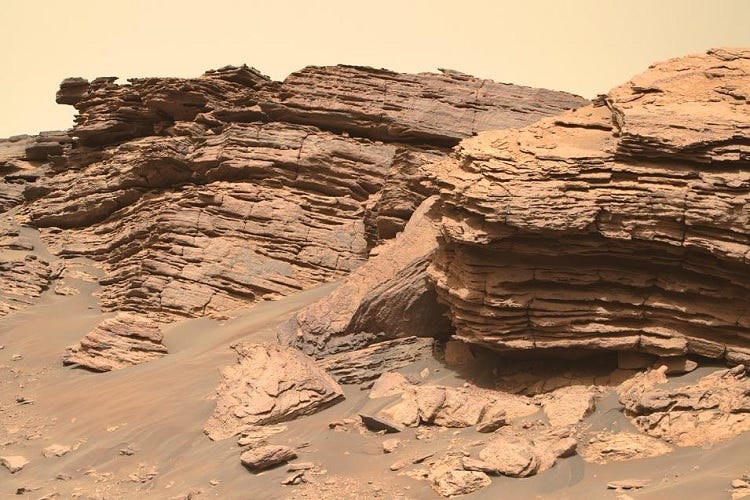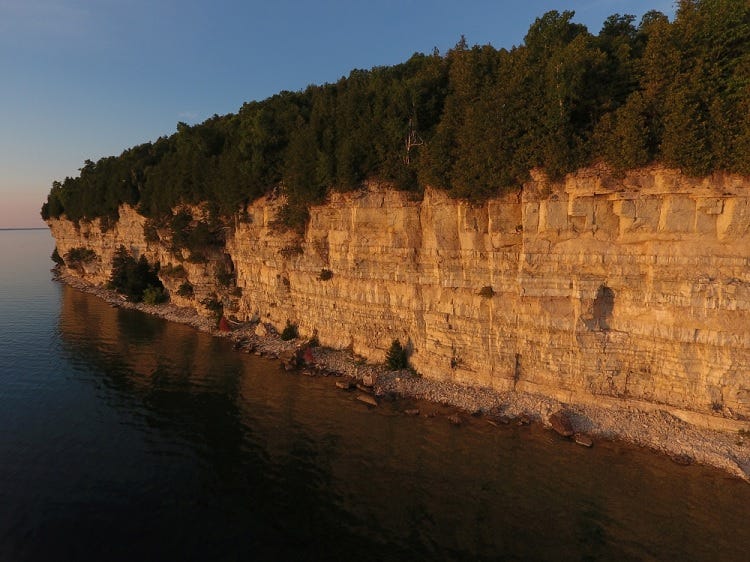The question of where the atmosphere on Mars went has been around ever since we found out how thin it is. Some say it was blown away by solar wind. Others think it is just frozen in CO2 ice under the sand. But there is another possibility. There is Iron oxide everywhere on Mars. Rounding iron’s mass to 56 and oxygens mass 16 the formula Fe2O3 gives 2(56) + 3(16) = mass of iron oxide or 48/112 or 42.9% for the percentage of oxygen contained in that iron oxide. Iron oxide has a density of 5.24. In short, you need 43 tons on average per square meter just to lock up the equivalent of one atmosphere. Is that there?
The short answer is it is possible, maybe even probable, but we don’t know for sure. How deep is the average sedimentary rocks of mars? Like Earth, Mars has been making those sedimentary rocks for over 4 billion years. Then there is the question of how long has iron oxide been a large component of that? It is well within the realm of possibility that there is quite a bit more than 43 tons of it if that sedimentary rock is hundreds of meters deep, as some suggest.
Nor is iron the only thing that has been binding atmosphere since Mars began. Calcium carbonate, CaCO3, also appears to be widespread. Between these two, and other oxides and carbonates formed in the water when it has dissolved both minerals and CO2, you can likely account for most of the atmosphere that Mars lost. That process may well still be going on under the sand, further depleting what little atmosphere Mars has left. Where water is still liquid, it will still be combining minerals with what gases reach that deep. There is not going to be some quick and easy way of getting that atmosphere back. That atmosphere is solidly locked away in the rocks.
The sedimentary rock layer is likely hundreds of meters deep. Each cubic meter of rock likely contains over a ton of trapped O2 and CO2 in it, but we will not know until we go there and check.
Those processes are going on to this day right here on Earth too, with our carbonate formation being even faster due to corals and shellfish. But unlike Mars, we have active volcanoes putting out as much gas as gets used up each year. If those volcanoes ever stop, an ice age that never ends begins, and in a hundred million years, we may start looking like Mars. It is to our long-term advantage to study that there and here to fully understand the process.






